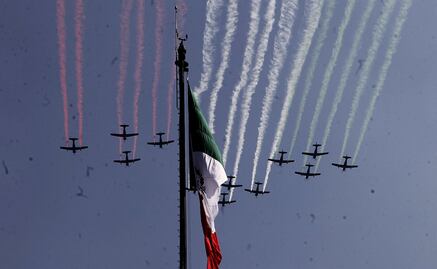On the 109 anniversary of the Mexican Revolution , the government announced several activities to commemorate the political movement.
On November 20 , there was be a ceremony to decorate the armed forces at 10 a.m. at the National Palace , President López Obrador's office and residence.
There was a historical representation of the Mexican Revolution, with over 1,130 characters, antique cars, clothes, and other objects. The representation took place at the Zócalo, Mexico City's main square.
Noticias según tus intereses
[Publicidad]
[Publicidad]








































